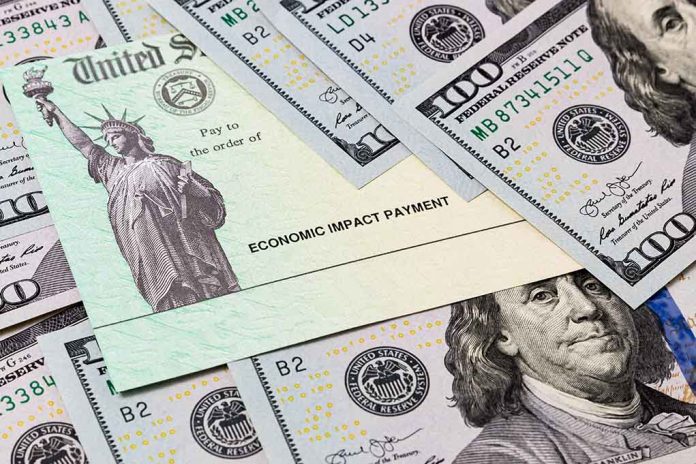
(DailyDig.com) – Most Americans know that the US government provides retirement income from the Social Security Administration (SSA). The SSA also provides income for people with disabilities, and additional assistance for those whose incomes are well below the poverty line. Almost 70 million Americans received benefits from SSA in 2021.
It can be confusing to figure out which SSA benefits you or a family member may qualify for. Each program has different eligibility guidelines, but there could be some overlap. Essentially, there are three benefits programs that are administered by SSA:
- Social Security Retirement
- Social Security Disability Insurance
- Supplemental Security Income
Retirement Benefits
This is the program that Americans are most familiar with, since everyone who ever worked a certain amount will receive benefits when they are at least 62 years old. You pay into the system from your first job, and continue until you retire. Your employer takes out a certain percentage of your pre-tax wages every pay period, and you personally contribute the same amount—6.2% of your wages, for a total of 12.4%. If you’re self-employed, you pay the same amount when you file your income taxes (either quarterly or annually).
There is a maximum you pay into the system every year. Your payments into the system cap at $9114.00, regardless of your total income.
The amount you qualify for is based on several factors, and we will go over those in detail.
How to determine your retirement benefits
SSA uses a credit system to determine your benefits. If you were born after 1929, you need 40 credits, which adds up to about 10 years of work. These are the minimum ages you can retire and receive full retirement benefits.
- Born between 1943-1954: 66
- Born after 1955: 67
The later you retire, the greater your benefits, but the maximum monthly benefit for an individual is $4,194 monthly. SSA calculates your retirement benefits based on the highest 35 years of earnings—the summer gigs and early career years don’t usually count.
Social Security Disability Insurance
There’s another program that may be available to you and qualified family members if you become disabled and can’t work before you’re old enough to retire—Social Security Disability Insurance (SSDI). If you have a medical condition that makes it impossible for you to work for at least a year, or if your condition is diagnosed as terminal, you are probably eligible for SSDI benefits. The requirements are straightforward: have you worked recently enough, long enough, and paid Social Security taxes? If so, you can get those benefits. If your disability is temporary or partial you don’t qualify for SSDI benefits.
Who determines if I’m disabled?
SSA has a formula and a checklist they use to determine if your disability makes you eligible for SSDI. When you apply for SSDI benefits, the SSA wil decide if your case merits further review. If so, it’s sent to your state’s Disability Determination Services offices. The DDS office will gather information and evidence about the following:
- Your exact diagnosis
- When your medical condition started
- Test results and prognosis
- How it limits your activities, especially regarding work
They’ll ask really specific questions regarding your work activities—walking, lifting, sitting, and remembering tasks and instructions. If the DDS determines they can’t make the decision, they will refer you to another doctor for a second opinion. SSA covers both the medical and travel costs for these additional exams.
Before they make a final decision, the DDS will determine if you can work at a different position, or if your condition will allow you to work again within a 12-month period. If they decide you can do other work or you’ll be significantly improved in a few months, your application will be denied.
How do they calculate SSDI benefits?
Disability benefits are calculated by considering both your age and work history, typically using the average income in the years before the disability happened. In 2022, the average SSDI benefit is $1,223 monthly, and maxes out at $3,345 monthly.
Supplemental Security Income
SSA also has a program available—Supplemental Security Income (SSI)— to assist older, disabled, or blind people whose income is limited and have few assets.
Qualifying for SSI
In 2022, the federal benefit rate (FBR) is countable income of $841 for one person and $1,261 for a couple when both are eligible. Since SSI is a supplemental program—it’s designed to add to existing retirement or disability income—you can get your Social Security or SSDI benefits along with SSI.
Some wages are carved out from the SSI calculation–this is what’s not considered “countable”.
- $20 per month of income
- $65 per month in wages, and half the amount over $65 ($32.50)
- Income from wages you use to pay for things or services that help you work if you are disabled
- If you’re blind, income from wages you use for work expenses
The SSI program provides monthly additional income so that recipients can meet their basic needs for clothing, food, and shelter. How much you can get depends on where you live and your other sources of income. Some states put additional money into the federal money SSI provides, so you may qualify for more.
How SSA determines benefits
SSA looks at all of your assets and income sources before they make a decision about SSI:
- Bank accounts
- Stocks, bonds, and other investments
- Cash (what’s in your checking or savings account)
Your total assets can’t exceed $2,000 for an individual or $3,000 for a couple to be eligible for SSI.
If you have other income—Social Security, a pension, or wages—your SSI payments will be less. SSA also factors in your living arrangements when they’re determining your SSI benefit—if you live with relatives, for example, or if someone else pays your household expenses.
Many people who qualify for SSI get assistance from other sources, both public and private. If you think you or a family member aren’t eligible for this money because you get services elsewhere, please understand that there aren’t any limits on how much outside help you get. If you get assistance from any of these types of organizations, you still can qualify for SSI.
- Housing or food you get from non-profit groups
- Home energy assistance help
- Grants and scholarships that are used for tuition or other educational expenses
- Supplemental Nutrition Assistance Program (SNAP) benefits
Copyright 2022, DailyDig.com













